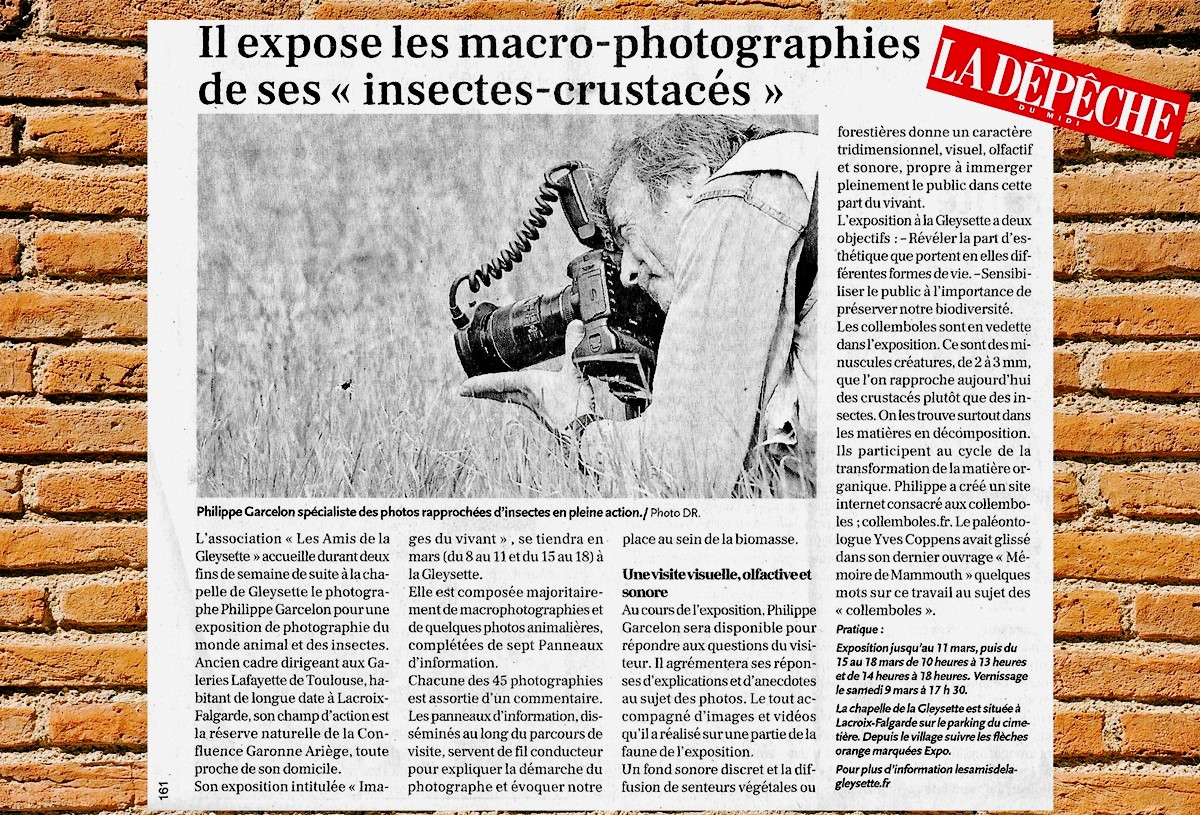For around twenty years, scientists have been warning us about the collapse of insect populations and their consequences. The photographic exhibition “Images of the Living” lifts the veil on some representatives of threatened populations. Around 50 photographs, accompanied by explanatory inserts. The exhibition was held in a restored chapel whose interior is made of exposed red brick.
Never in my village have we talked so much about springtails!

A local association, “Les amis de la Gleysette”, offered me the opportunity to settle in a remarkable site. A red brick chapel, typical of the region, named "La Gleysette". Link: https://lesamisdelagleysette.fr/

Louis Deharveng, researcher, professor emeritus attached to the "National Museum of Natural History" and essential character, when it comes to springtails, honored me with his presence on the occasion of the opening of the exposure.
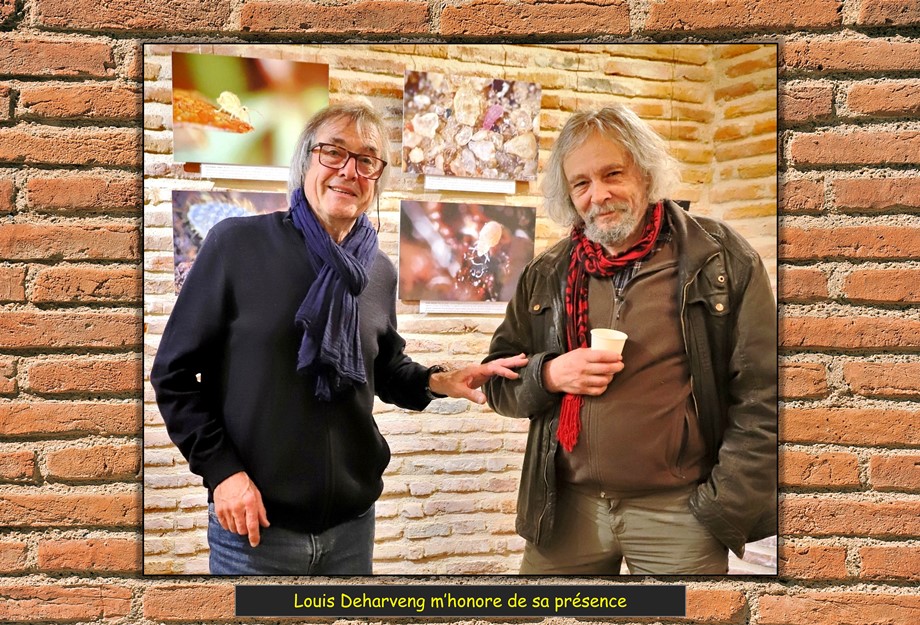
The uninformed visitor lacks dimensional reference when faced with enlargements of springtails. To help him measure the scales on which we are located, I created a montage, based on an enlarged €1 coin next to which I represented at the same scale some of the springtails on display.
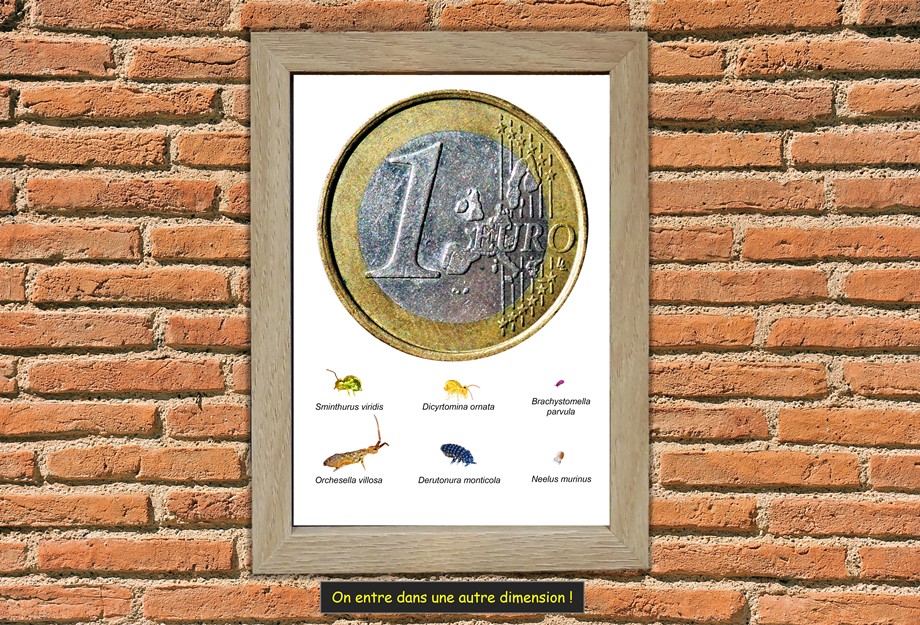
In the exhibition, each photograph is accompanied by an explanatory text.
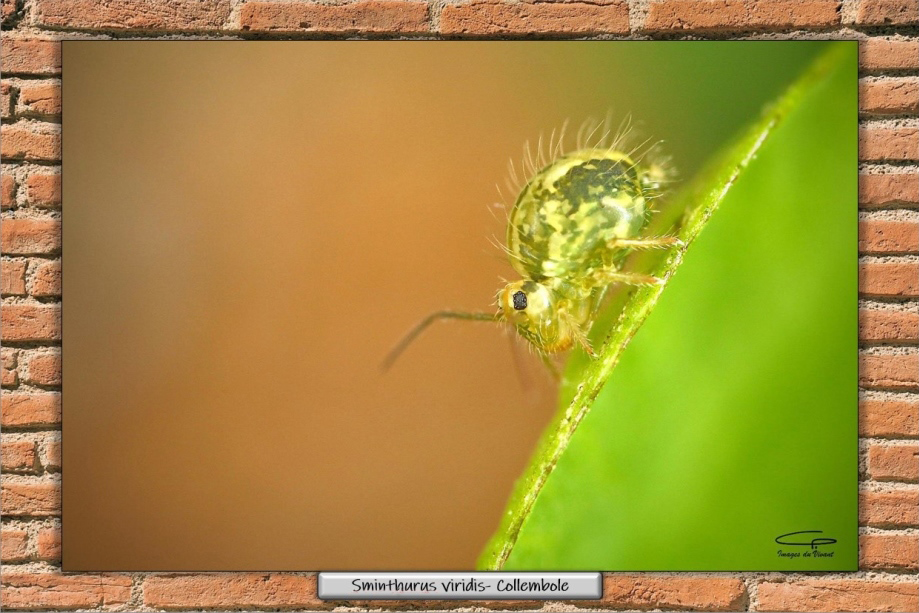
Sminthurus viridis is a springtail that measures between 2.5 and 3 mm. It lives at ground level and loves the clover which it feeds on. It also likes Alfalfa to which it sometimes causes serious damage. It has a jumping organ that allows it to escape dangers. It is especially active in spring and fall. To face frost or avoid dehydration during dry periods, it takes refuge underground.
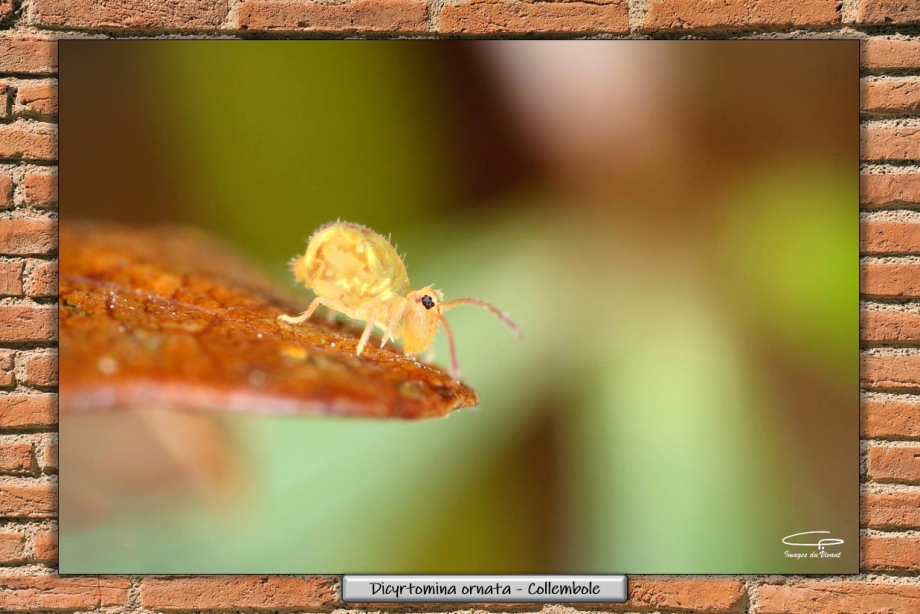 Dicyrtomina ornata measures approximately 2.5mm to 3mm. It belongs to a group which is distinguished by varied pigmentations with symmetrical patterns. It has trichobothria; articulated bristles capable of signaling any movement in its safety zone. Its reproduction takes place without copulation. The male places a spermatophore on a small rod and the female grabs it and places it in her genitals.
Dicyrtomina ornata measures approximately 2.5mm to 3mm. It belongs to a group which is distinguished by varied pigmentations with symmetrical patterns. It has trichobothria; articulated bristles capable of signaling any movement in its safety zone. Its reproduction takes place without copulation. The male places a spermatophore on a small rod and the female grabs it and places it in her genitals.

We observe Brachystomella parvula, a Poduromorph springtail measuring 1 mm, in moist litter. this specimen was photographed in the interstitial sands along the Ariège river. Despite its small size, it stands out from the substrate thanks to its fairly marked purplish-pink coloring.
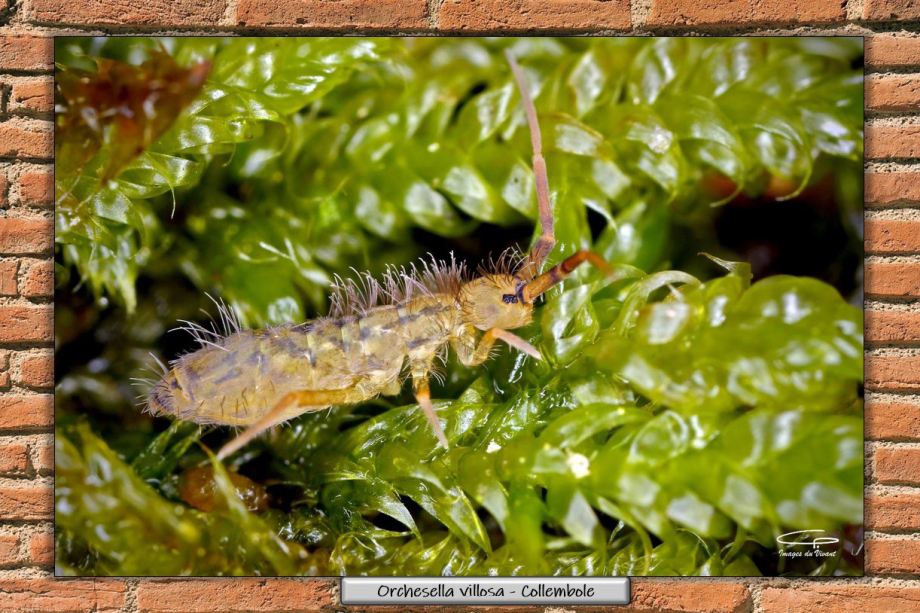
Orchesella villosa can reach up to 6 mm, making it a large springtail. It lives in piles of leaves, under stones or on moss. It has eye plates with 8 ocelli each, but its eyesight is limited. Equipped with a furca, it can jump up to 20 times its size, which for a human would correspond to a long jump of around thirty meters!
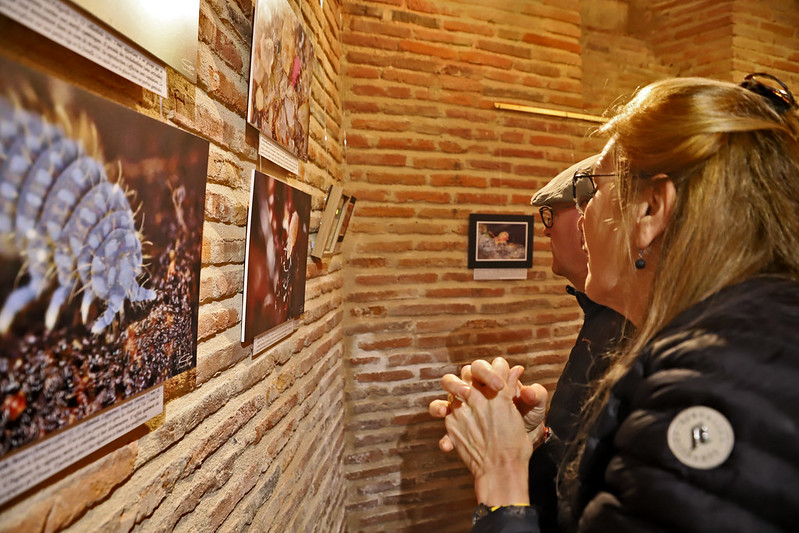
Many visitors discover a world they never suspected
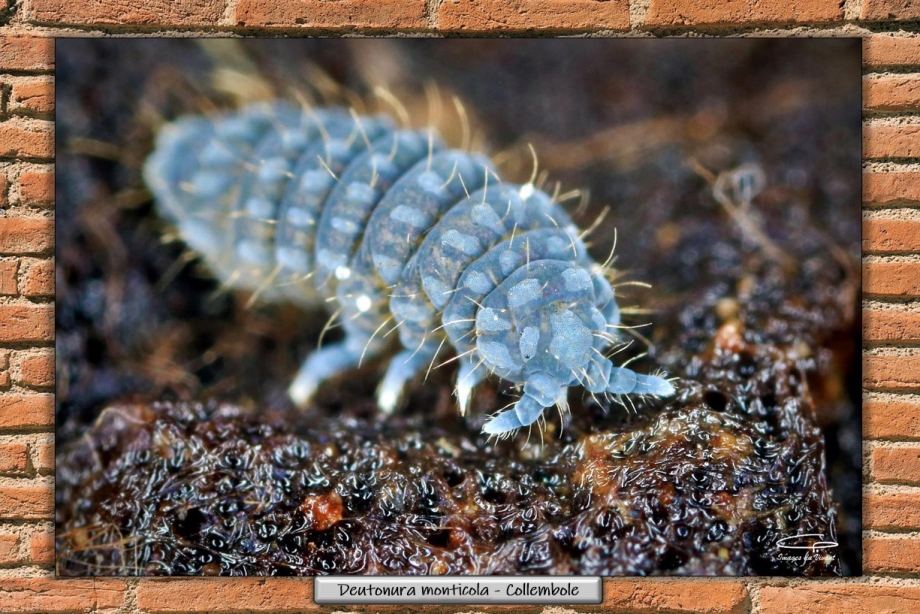 Deutonura monticola, with a rounded appearance and bluish gray color, measures approximately 2.5 mm. It evolves on forest litter where it is active in spring and after the heat of summer. Like other springtails, it fragments dead plants and contributes to their spread. It also loves the microscopic fungi that it grazes on, thus participating in their regulation and limiting their proliferation.
Deutonura monticola, with a rounded appearance and bluish gray color, measures approximately 2.5 mm. It evolves on forest litter where it is active in spring and after the heat of summer. Like other springtails, it fragments dead plants and contributes to their spread. It also loves the microscopic fungi that it grazes on, thus participating in their regulation and limiting their proliferation.
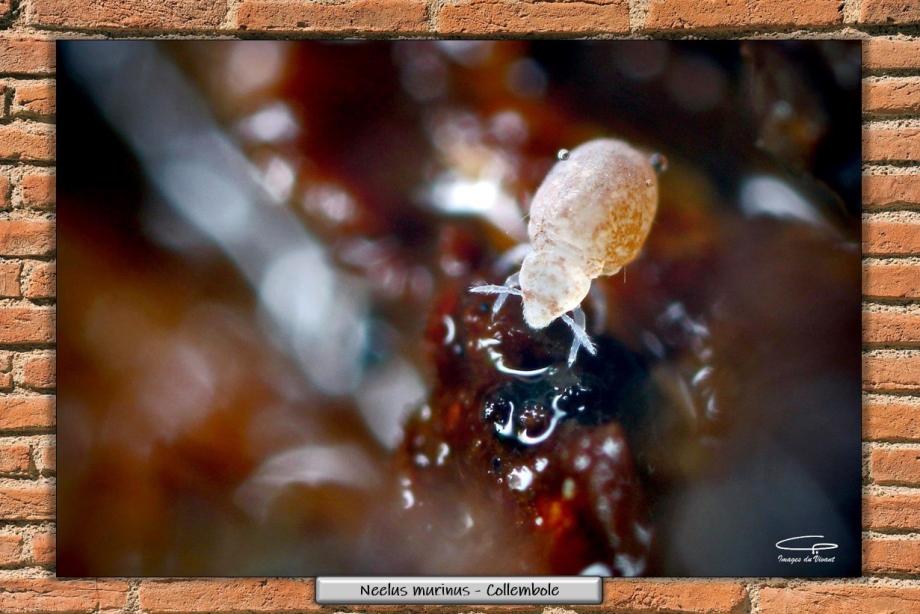 The size of Neelus murinus does not exceed one millimeter. It has no eyes and avoids light. It evolves under moist litter. It is one of the springtails that is difficult to photograph due to its size and especially the contrast between its body, a milky bed that is quickly overexposed, and the dark substrates where it is found.
The size of Neelus murinus does not exceed one millimeter. It has no eyes and avoids light. It evolves under moist litter. It is one of the springtails that is difficult to photograph due to its size and especially the contrast between its body, a milky bed that is quickly overexposed, and the dark substrates where it is found.
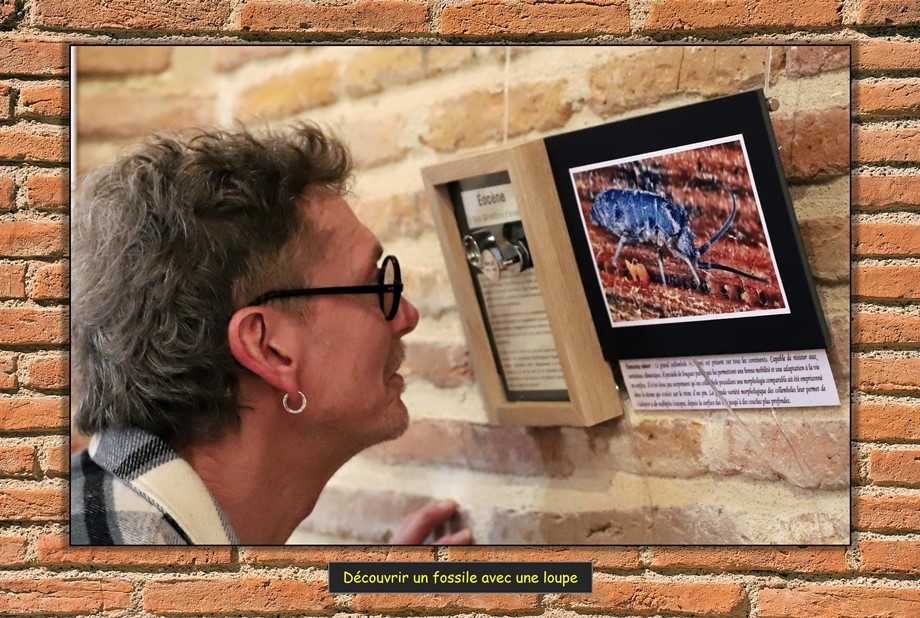

A montage, equipped with back lighting and a high-magnification magnifying glass, shows a fragment of Baltic amber that includes a springtail trapped in the resin 40 million years ago. The visitor thus takes a journey into the past to the Eocene era. Opposite, a current tomocerus minor whose morphology seems very similar raises questions about the evolution of species...

Dicyrtomina ornata. Springtails adopt different reproductive behaviors depending on the species. Some perform orderly courtship displays which are veritable choreography. Dicyrtomina ornata proceeds differently. The male deposits a spermatophore on which the female will place her genital opening. She will store the sperm in an internal receptacle which she has before fertilization of the eggs.
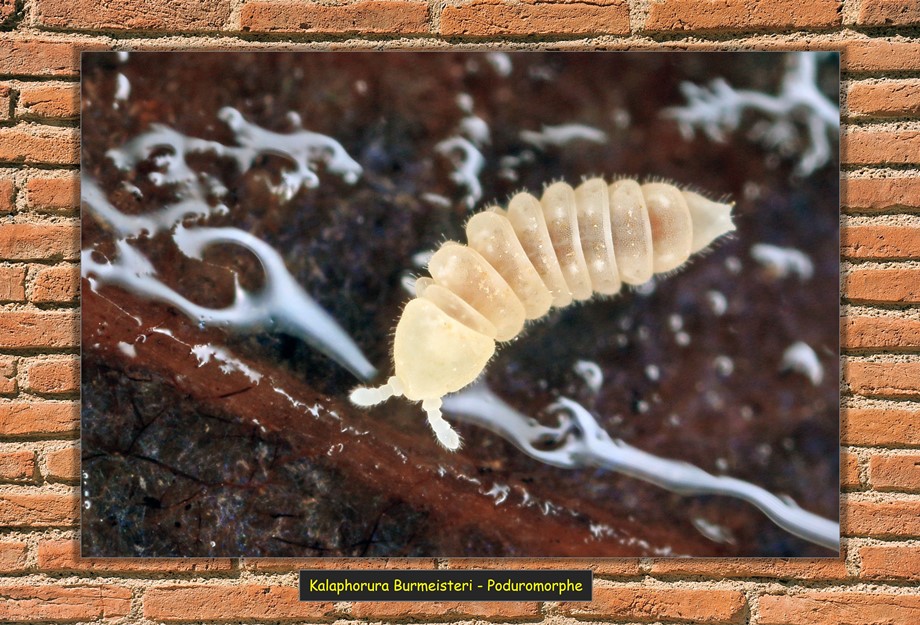
kalaphorura burmeisteri. Blind, with short legs and a vestigial jumping organ, this springtail evolves in the first layers of litter below the surface of the soil. As it cannot escape its predators, it has defensive glands on the surface of its body which secrete chemical substances with an unpleasant taste, capable of repelling potential predators such as ants. It has chemoreceptor organs at the base of its two antennae which communicate information about its environment.

The local press reported the event without mentioning the springtails, and a reference to this website

